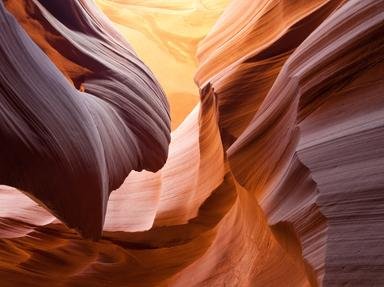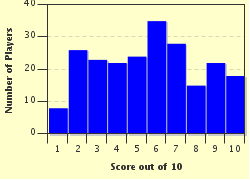Quiz Answer Key and Fun Facts
1. There are a series of unique properties that each mineral possesses. By testing these properties, one can identify most of the common minerals in the world. Which of the following is not one of these properties?
2. Who is considered to be the Father of Modern Geology, whose work, among other things, created the basis of the theory of Uniformitarianism?
3. The San Andreas Fault is an example of what type of tectonic plate boundary?
4. There are several principles that geologists utilize to determine the order of events in the earth. Which one is described here? Sedimentary rock layers are deposited in order, from oldest at the bottom to youngest at the top.
5. Which of the following would come first: a rock or a fault in the rock?
6. On the geologic time scale, era names represent important differences in what?
7. In which of the following geologic structures would one be most likely to find oil and/or natural gas.
8. In a reverse fault, the hanging wall moves up, relative to the foot wall.
9. Groundwater flow is described by which of these laws?
10. Which of the following is an intensity scale that assesses the amount of damage done by an earthquake?
Source: Author
schuhmacher
This quiz was reviewed by FunTrivia editor
crisw before going online.
Any errors found in FunTrivia content are routinely corrected through our feedback system.

